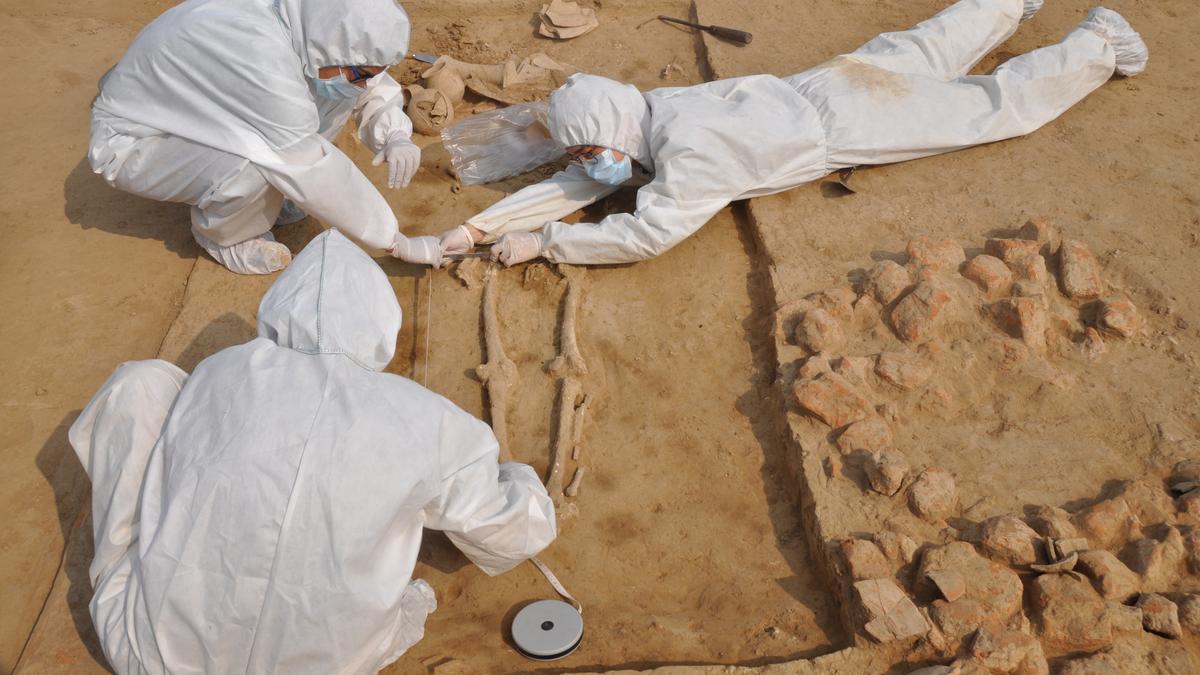
Archaeologists, Sanskrit scholars tie up to decipher Rigveda text Premium
The Hindu
Archaeologists and scholars collaborate to decode Rigveda text, aiming to establish a link between Harappan civilization and Vedic age.
Taking forward the research to potentially establish a relationship between the Harappan civilisation and the people of the Vedic age, a group of archeologists are now collaborating with Sanskrit scholars to decipher the text of the Rigveda.
In an exclusive interview with The Hindu, Vasant Shinde, archaeologist and former Vice Chancellor of Deccan College, Pune, said that a clear understanding of what is mentioned in the Rigveda text is important in order to co-relate archaeological evidence unearthed by his team in excavations of Harappan settlements at Haryana’s Rakhigarhi and Banawali, at Kalibanga on the Haryana-Rajasthan border, and at Dholavira in Gujarat.
The National Council of Educational Research and Training (NCERT) recently made a major addition to the Class 12 History textbook, Themes in Indian History Part 1, under a chapter titled, ‘Bricks, Beads and Bones - The Harappan Civilisation’, based on DNA evidence from the 4,600-year old remains of a woman, indicating that the Harappans were an indigenous people. Mr. Shinde’s work is now focussed on testing the hypothesis that the Harappans and the Vedic people were the same. The NCERT has added a disclaimer in the textbook that more research is required to establish this relationship.
“While excavating the site of Rakhigarhi, we found evidence of ritual platforms and fire altars. Parallely, fire worship is mentioned in Rigvedic texts. We now need to get more understanding about what is mentioned in Rigvedic text, and how much of that can be co-related with archaeological evidence. We have not done this in great detail, but now we want to do it,” Mr. Shinde said.
Currently, there is a debate about the period of origin of the Vedas, with one set of historians holding that the Vedas originated between 1,500 BC and 2,000 BC. However, another set of historians, including Mr. Shinde, believe that the Vedas date farther back to 2,500 BC — or 4,500 years ago. This would coincide with the age of the genetic evidence from the erstwhile Harappan woman’s bone samples tested at the Rakhigarhi site.
Mr. Shinde argues that nobody knows when the Vedic texts were written, adding that people will only believe hypotheses if one has the archaeological evidence to prove or disprove them.
“If you see description in Rigvedic text of the area where people lived, there is frequent description of the river Saraswati. The mention of the river is recorded at least 71 times in the Rigvedic text. During archaeological excavations, we discovered a majority of Harappan settlements along the banks of river Saraswati. Of the nearly 2,000 known Harappan settlements spread over the Indus basin, Saraswati, and in Gujarat, of which almost two-thirds, at least 1,200 are located along the basin of the river Saraswati,” Mr. Shinde says.

The Karnataka government has drafted a comprehensive master plan for the integrated development of Kukke Subrahmanya temple, the State’s highest revenue-generating temple managed by the Hindu Religious Institutions and Charitable Endowments Department. The redevelopment initiative is estimated to cost around ₹254 crore and aims to enhance infrastructure and facilities for devotees.












